The Catalyst Killing - [19]
XV
It was ten past six by the time I rang the doorbell of Martin Morgenstierne’s house in Frogner.
The house was even larger than I had expected, and the host more correct. He was standing waiting at the door, gave me a firm handshake and immediately accepted my apology that I was a few minutes late owing to other commitments relating to the case.
Martin Morgenstierne was as impeccably dressed as I had imagined, in a black suit and tie. But he was unexpectedly tall and unexpectedly youthful. His hair was still black and his face was free of wrinkles, so he did not look a day over fifty, and his movements were still vigorous and dynamic. He seemed remarkably fit for a bank manager.
Martin Morgenstierne showed me into the drawing room and we sat down opposite each other on very generous sofas. I politely declined his offer of a drink. He poured himself a small glass of cognac from a large drinks cabinet, but left it untouched to begin with. I waited to see if he would say anything first. In the meantime, I glanced swiftly around the room.
The contrast with the Reinhardts’ flat in Seilduk Street was striking, and it was not difficult to understand why the meeting of the two families had been such a collision both politically and culturally. The walls here were at least twice as big as the Reinhardts’, but with the exception of three impressive bookcases, they were panelled and remarkably empty. There were a couple of plaques honouring Martin Morgenstierne himself, and two pictures of him with an attractive, elegant dark-haired woman, who was obviously his wife. The first was an old black and white wedding photograph, the second a more recent colour photograph from their silver wedding anniversary or some such celebration. Martin Morgenstierne was easily recognizable. However, there was a stark contrast between his broad, apparently genuine smile in the pictures on the wall and his very grave expression now.
The drawing room almost gave the impression that Martin Morgenstierne had had a happy but childless marriage. There was no trace of his daughter, though I suspected that at some point there had been. Below the photographs of himself and his wife were two lighter squares on the wooden panelling, telling of photographs that had been removed.
Martin Morgenstierne was clearly an intelligent man with good social skills. He followed my gaze around the room for the first thirty seconds or so, before breaking the silence.
‘You are no doubt somewhat surprised that I do not have any photographs of my only daughter here, and that I carried on working as usual after I had received the news of her death.’
I nodded my confirmation. He continued, still without a shadow of a smile.
‘My family has always had a strong sense of duty and work ethic. I have not missed a single day of work, other than trade holidays, for more than a decade. I have worked extremely hard all my life and my compulsion to work became even stronger after the death of my wife. I realized very quickly that I would go mad if I stayed at home on my own too much. So instead, I worked my way through the greatest sorrow I have ever experienced. And now I will do the same.’
He took a nip from the glass of cognac, and sat for a moment lost in thought. I was relieved to hear that Martin Morgenstierne did feel some grief at his daughter’s death, and I hoped that we were getting closer to something.
‘There were of course pictures of her on the walls for all the years she lived at home. And I left them there even though she rebelled and turned her back on all the values we held. But in the last few months that my wife was alive, her lack of respect was too much. I phoned Marie one Wednesday in September 1967 to say that her mother was deteriorating rapidly, and that my wife would like to meet her to see if they could be reconciled. Marie replied that it was highly unlikely that a meeting could lead to reconciliation at this stage, and that she in any case had a meeting that evening. She would see if she had the time to come by at the weekend. But by the time the weekend came, Margrete was dead. So there was a tragic end to a sad chapter in my family story. I hope that you understand and judge my reactions accordingly.’
I nodded. Even though I had only heard one side of the final chapter in the Morgenstierne family history, it was easy to understand that this would have made a deep impression on an old-school family man. The sudden use of her first name reinforced my impression that he had been deeply attached to his wife.
‘I continued to treat my daughter with the utmost respect, even though she perhaps did not deserve it. She inherited a quarter of million from her mother, fifty thousand more than was in the estate. But I could no longer bear to see her picture alongside that of her mother. So I put away all the photographs of Marie. I hoped that there would be better times ahead and that we would eventually find our way back to each other. But it seemed, as she said herself, highly unlikely. I sent her a Christmas card and received a card in response for New Year. Other than that, we have had no contact for more than a year now.’
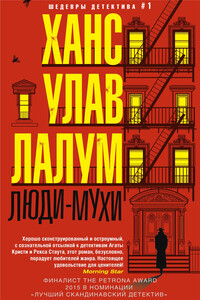
Убит бывший лидер норвежского Сопротивления и бывший член кабинета министров Харальд Олесен. Его тело обнаружено в запертой квартире, следов взлома нет, орудие убийства отсутствует. На звук выстрела к двери Олесена сбежались все соседи, но никого не увидели. Инспектор уголовного розыска Колбьёрн Кристиансен считает, что убийство, скорее всего, совершил кто-то из них. Более того, он полагает, что их показания лживы.
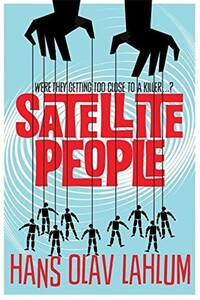
A gripping, evocative, and ingenious mystery which pays homage to Agatha Christie, Satellite People is the second Norwegian mystery in Hans Olav Lahlum's series. Oslo, 1969: When a wealthy man collapses and dies during a dinner party, Norwegian Police Inspector Kolbjorn Kristiansen, known as K2, is left shaken. For the victim, Magdalon Schelderup, a multimillionaire businessman and former resistance fighter, had contacted him only the day before, fearing for his life. It soon becomes clear that every one of Schelderup's 10 dinner guests is a suspect in the case.
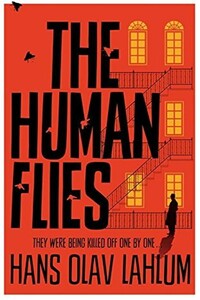
Oslo, 1968: ambitious young detective Inspector Kolbjorn Kristiansen is called to an apartment block, where a man has been found murdered. The victim, Harald Olesen, was a legendary hero of the Resistance during the Nazi occupation, and at first it is difficult to imagine who could have wanted him dead. But as Detective Inspector Kolbjorn Kristiansen (known as K2) begins to investigate, it seems clear that the murderer could only be one of Olesen's fellow tenants in the building. Soon, with the help of Patricia – a brilliant young woman confined to a wheelchair following a terrible accident – K2 will begin to untangle the web of lies surrounding Olesen's neighbors; each of whom, it seems, had their own reasons for wanting Olesen dead.
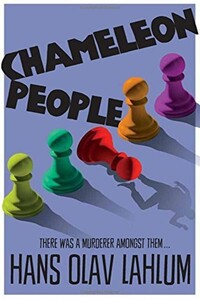
From the international bestselling author, Hans Olav Lahlum, comes Chameleon People, the fourth murder mystery in the K2 and Patricia series.1972. On a cold March morning the weekend peace is broken when a frantic young cyclist rings on Inspector Kolbjorn 'K2' Kristiansen's doorbell, desperate to speak to the detective.Compelled to help, K2 lets the boy inside, only to discover that he is being pursued by K2's colleagues in the Oslo police. A bloody knife is quickly found in the young man's pocket: a knife that matches the stab wounds of a politician murdered just a few streets away.The evidence seems clear-cut, and the arrest couldn't be easier.

Странные, зловещие и не укладывающиеся в голову события происходят в современном мегаполисе. У таинственного бизнесмена неизвестные жестоко убивают жену, а затем кто-то похищает ее тело из могилы. В его жизни появляется красивая и загадочная женщина, чтобы помочь ему выполнить безумную миссию. Кто-то заказывает в ювелирной мастерской клетку из чистого золота высотой в человеческий рост, весом в 158 килограммов и стоимостью шестьсот миллионов рублей. Древний Орден красного льва, основанный самым знаменитым чернокнижником Российской империи Яковом Брюсом, которого называли "русским Нострадамусом" и "личным колдуном" Петра Великого, и о котором сложено много невероятных легенд, ведет охоту на человека, который способен изменить этот мир раз и навсегда.
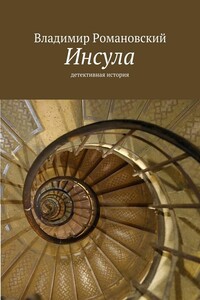
Детективная история, произошедшая в Санкт-Петербурге. Обычные люди в необычных обстоятельствах. Любовь, ненависть, жадность, драки и власть.
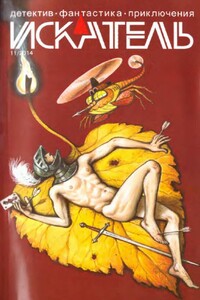
«ИСКАТЕЛЬ» — советский и российский литературный альманах. Издаётся с 1961 года. Публикует фантастические, приключенческие, детективные, военно-патриотические произведения, научно-популярные очерки и статьи. В 1961–1996 годах — литературное приложение к журналу «Вокруг света», с 1996 года — независимое издание.В 1961–1996 годах выходил шесть раз в год, в 1997–2002 годах — ежемесячно; с 2003 года выходит непериодически.Содержание:Анатолий Королев ПОЛИЦЕЙСКИЙ (повесть)Олег Быстров УКРАДИ МОЮ ЖИЗНЬ (окончание) (повесть)Владимир Лебедев ГОСТИ ИЗ НИОТКУДА.
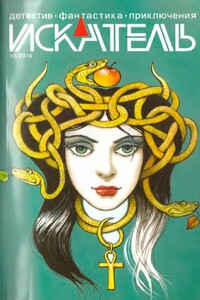
«ИСКАТЕЛЬ» — советский и российский литературный альманах. Издается с 1961 года. Публикует фантастические, приключенческие, детективные, военно-патриотические произведения, научно-популярные очерки и статьи. В 1961–1996 годах — литературное приложение к журналу «Вокруг света», с 1996 года — независимое издание.В 1961–1996 годах выходил шесть раз в год, в 1997–2002 годах — ежемесячно; с 2003 года выходит непериодически.Содержание:Олег Быстров УКРАДИ МОЮ ЖИЗНЬ (повесть);Петр Любестовский КЛЕТКА ДЛЯ НУТРИИ (повесть)
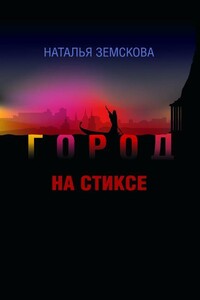
Наталья Земскова — журналист, театральный критик. В 2010 г. в издательстве «Астрель» (Санкт-Петербург) вышел её роман «Детородный возраст», который выдержал несколько переизданий. Остросюжетный роман «Город на Стиксе» — вторая книга писательницы. Молодая героиня, мечтает выйти замуж и уехать из забитого новостройками областного центра. Но вот у неё на глазах оживают тайны и легенды большого губернского города в центре России, судьбы талантливых людей, живущих рядом с нею. Роман «Город на Стиксе» — о выборе художника — провинция или столица? О том, чем рано или поздно приходится расплачиваться современному человеку, не верящему ни в Бога, ни в черта, а только в свой дар — за каждый неверный шаг.
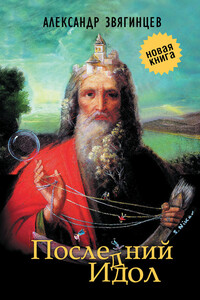
В сборник «Последний идол» вошли произведения Александра Звягинцева разных лет и разных жанров. Они объединены общей темой исторической памяти и личной ответственности человека в схватке со злом, которое порой предстает в самых неожиданных обличиях. Публикуются рассказы из циклов о делах следователей Багринцева и Северина, прокуроров Ольгина и Шип — уже известных читателям по сборнику Звягинцева «Кто-то из вас должен умереть!» (2012). Впервые увидит свет пьеса «Последний идол», а также цикл очерков писателя о событиях вокруг значительных фигур общественной и политической жизни России XIX–XX веков — от Петра Столыпина до Солженицына, от Александра Керенского до Льва Шейнина.